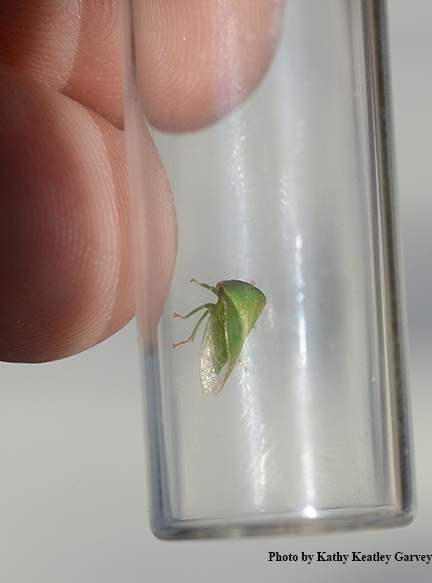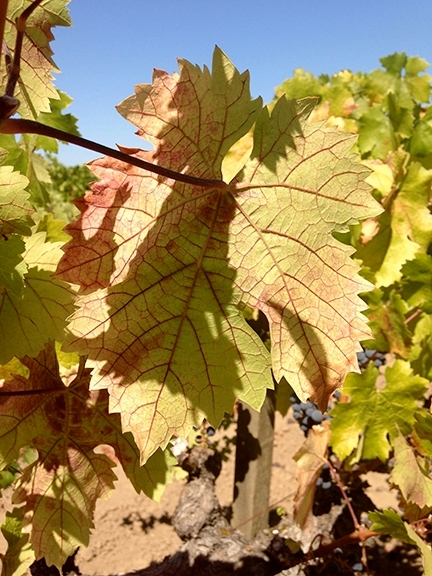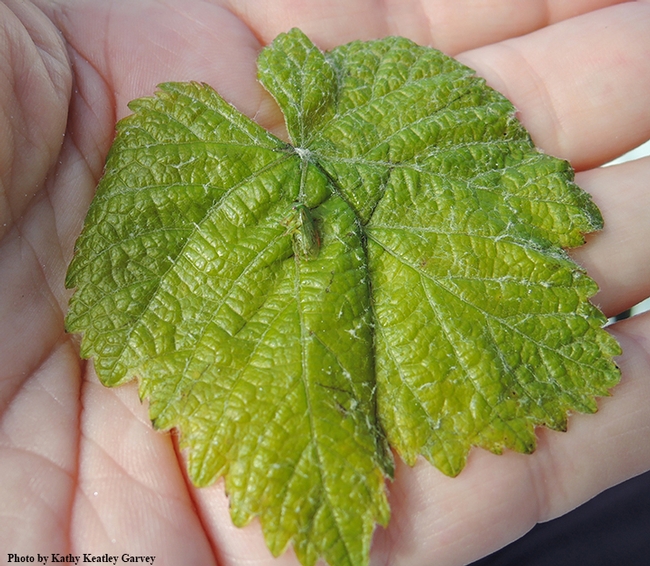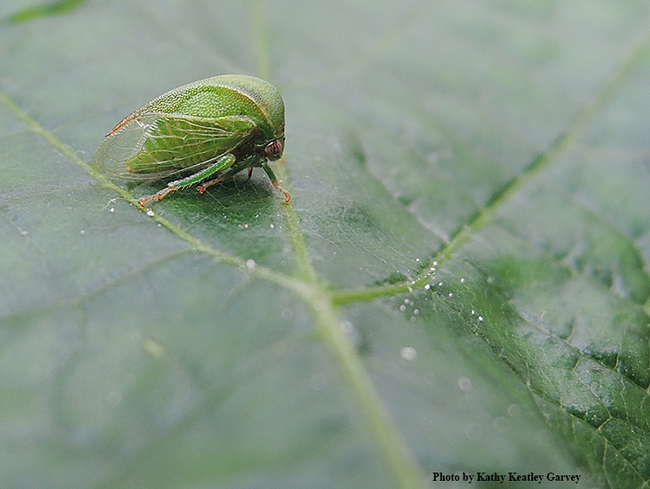
It's the cover story of a special focus issue, "Disease Management in the Genomics Era," in the journal Phytopathology.
The research was directed by UC Davis integrated pest management (IPM) specialist Frank Zalom and research biologist Mysore "Sudhi" Sudarshana of the USDA's Agriculture Research Services (ARS), who is based in the UC Davis Department of Plant Pathology.
Last year the Zalom team hypothesized that the three-cornered alfalfa hopper could transmit the Grapevine Red Blotch-associated virus, GRBaV, "based in part on phylogeneic analysis of coat protein sequences of 23 geminiviruses that revealed that GRBaV-CP was most similar to that of another geminivirus that was transmitted by another treehopper," explained Zalom, a distinguished professor of entomology with the UC Davis Department of Entomology and Nematology, and a past president of the Entomological Society of America.

“In commercial vineyards, lateral shoots of grapevines girdled due to feed injury by the adult three-cornered alfalfa hopper also tested positive for the virus using digital PCR,” the scientists noted in their abstract. “These findings represent an important step in understanding the biology of GRBaV and develop management guidelines.”
The disease, first noticed in 2008 and attributed to a newly identified virus in 2012, is present in many major grape production regions of the United States and Canada. It can reduce fruit quality and ripening.
The research team consisted of Zalom; Sudarshana; Brian Bahder, then a postdoctoral researcher in the Zalom lab and now an assistant professor and insect vector ecologist with the University of Florida; and Maya Jayanth, then a student in the Sudarshana lab.
In the Pest Alert, Zalom, a former director of the UC Statewide Integrated Pest Management Program, noted that “red leaf symptoms that differed from other known red leaf diseases affecting grape foliage” were first noticed in red wine grape cultivars in Napa County, and subsequently in many other California grape growing counties as well.
“Leaf symptoms first appear approximately mid-summer; however, timing of symptom expression differs among grapevine cultivars and year,” Zalom wrote. “In red-fruited cultivars, common symptoms include red blotches originating from the leaf margin or within the leaf blade and primary and secondary veins that often turn red. In white fruit cultivars, symptoms appear as pale green to pale yellow patches.”
Zalom noted that symptoms usually start on basal leaves and progress up the shoot. In some cultivars, such as Chardonnay and Zinfandel, “marginal burning may occur similar to severe potassium deficiency. In some red-fruited cultivars such as Malbec and Mourvèdre, the entire blade may turn red by harvest.” Grapes produced on infected vines are characterizes by reduced brix and other changes that can seriously impact wine quality.
“Foliar symptoms are generally distinct from those of grapevine leafroll disease (GLD) early in the season, but leaf blade coloration may resemble those of GLD by late fall,” Zalom pointed out. “At this time, red blotch disease is not known to kill grapevines.” However, the effect of the virus infections on yield and fruit quality varies and no cure exists at this time.
But back to the three-cornered alfalfa hopper. What's it look like? It's a green, clear-winged, wedge-shaped (thus the name "three-cornered") insect that's about a quarter of an inch long. That's about the size of a pomegranate seed or a tiny pea.
Earler this year we borrowed (and returned) a couple of insects from the Zalom lab and set out to capture some images of Spissistilus festinus on a grape leaf.
It's definitely a good hopper; we popped it in the refrigerator for a few minutes to slow it down.
And it's definitely camouflaged. Green on green.
It draws its name from alfalfa, but it feeds on many other plants, including soybeans, beans, cowpeas and sweet clover. It also can infest tomato, melon, wheat, oats, Bermuda grass and Johnson grass and the like.
Expect to hear more about Spissistilus festinus...
Attached Images:

